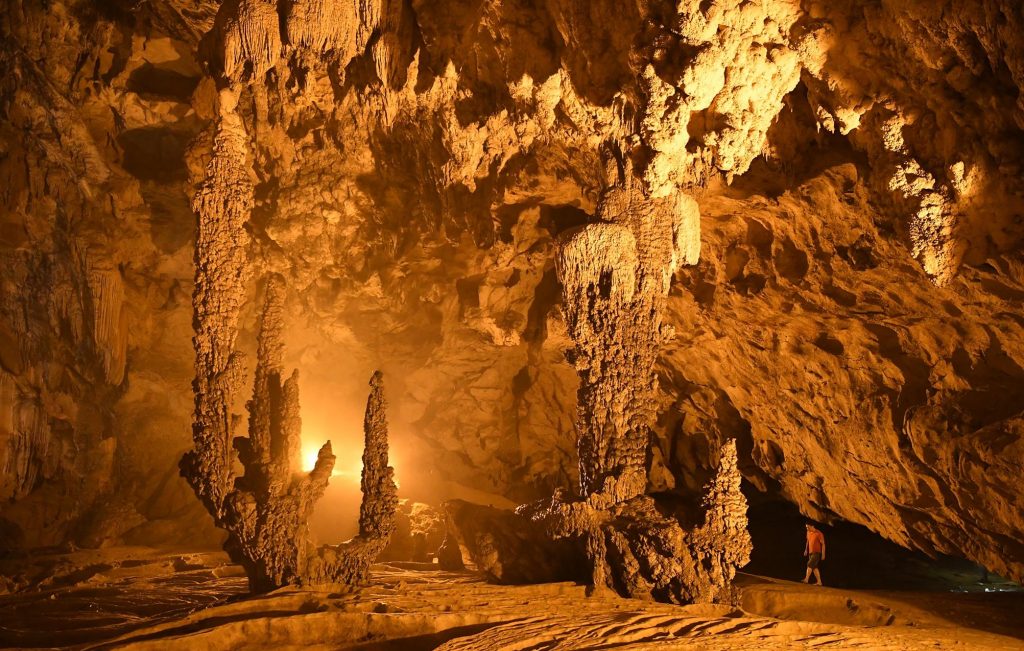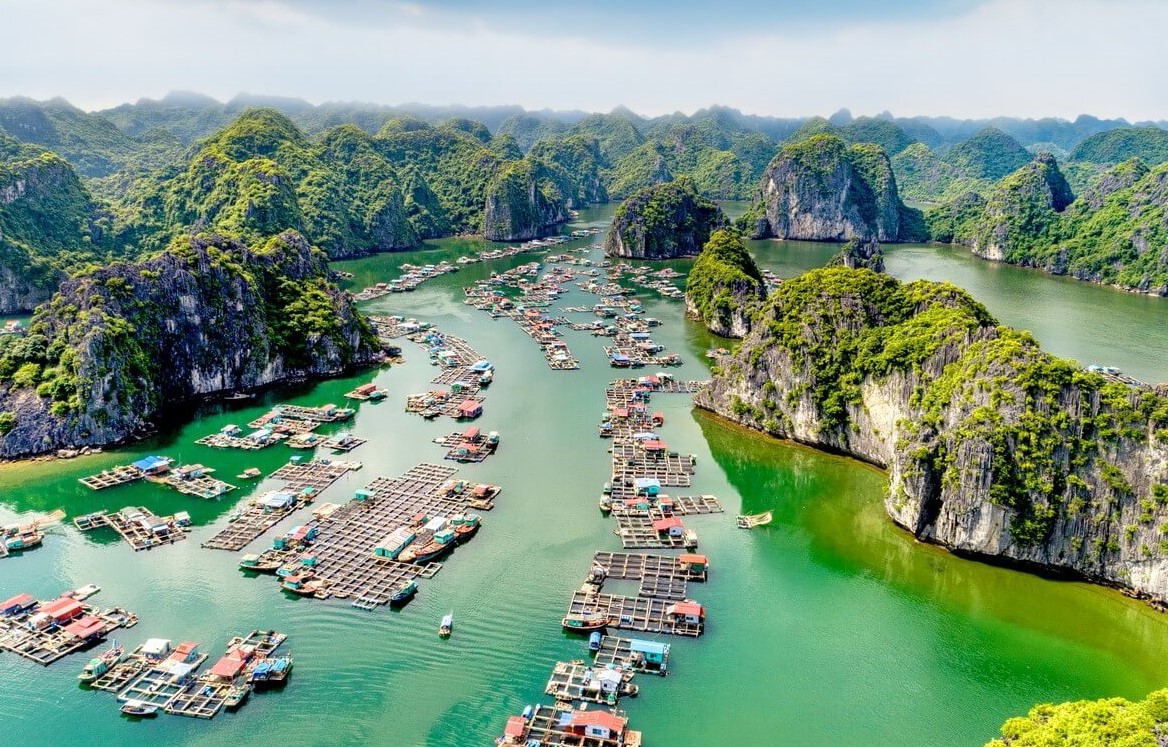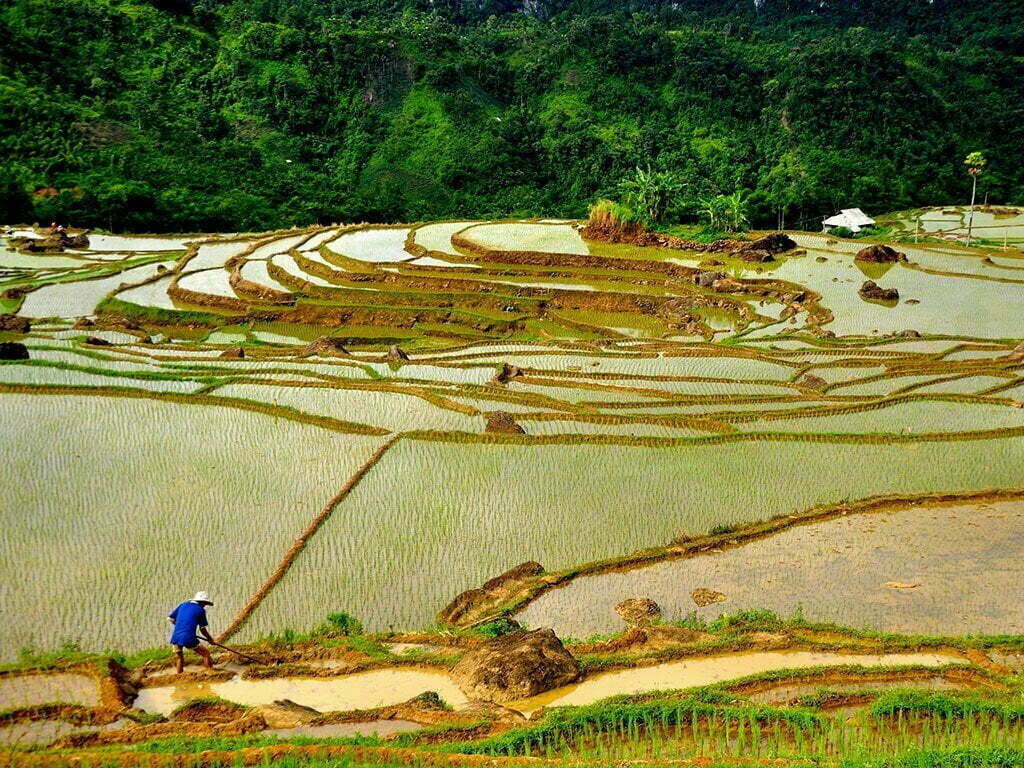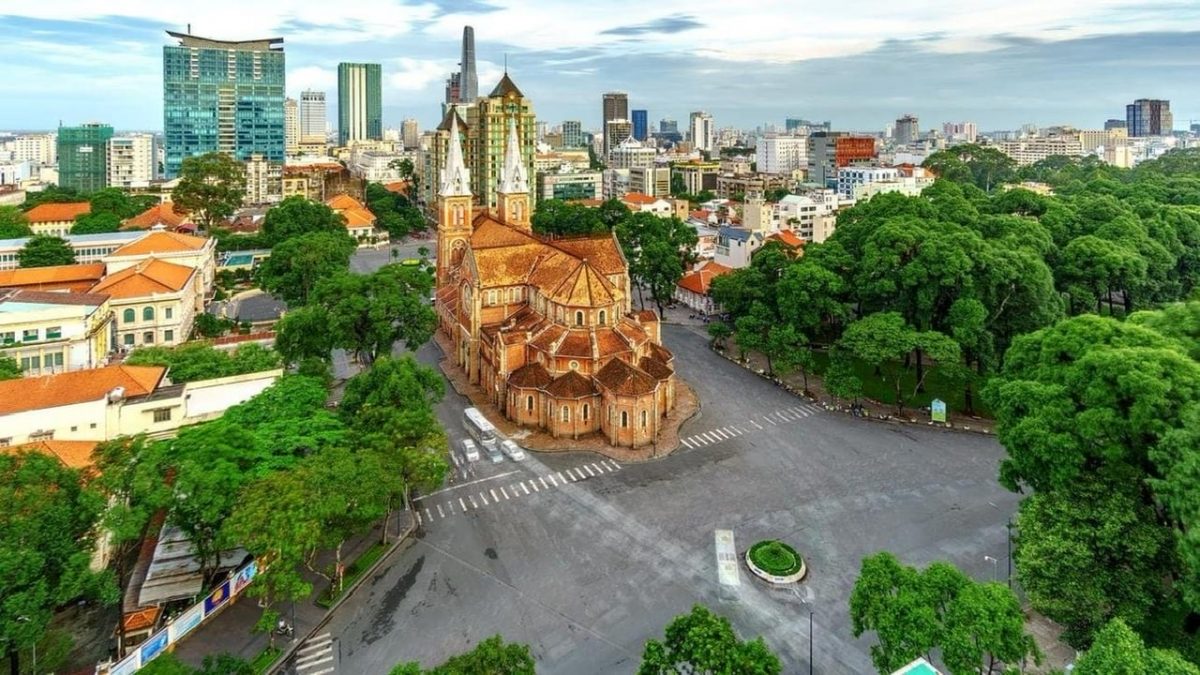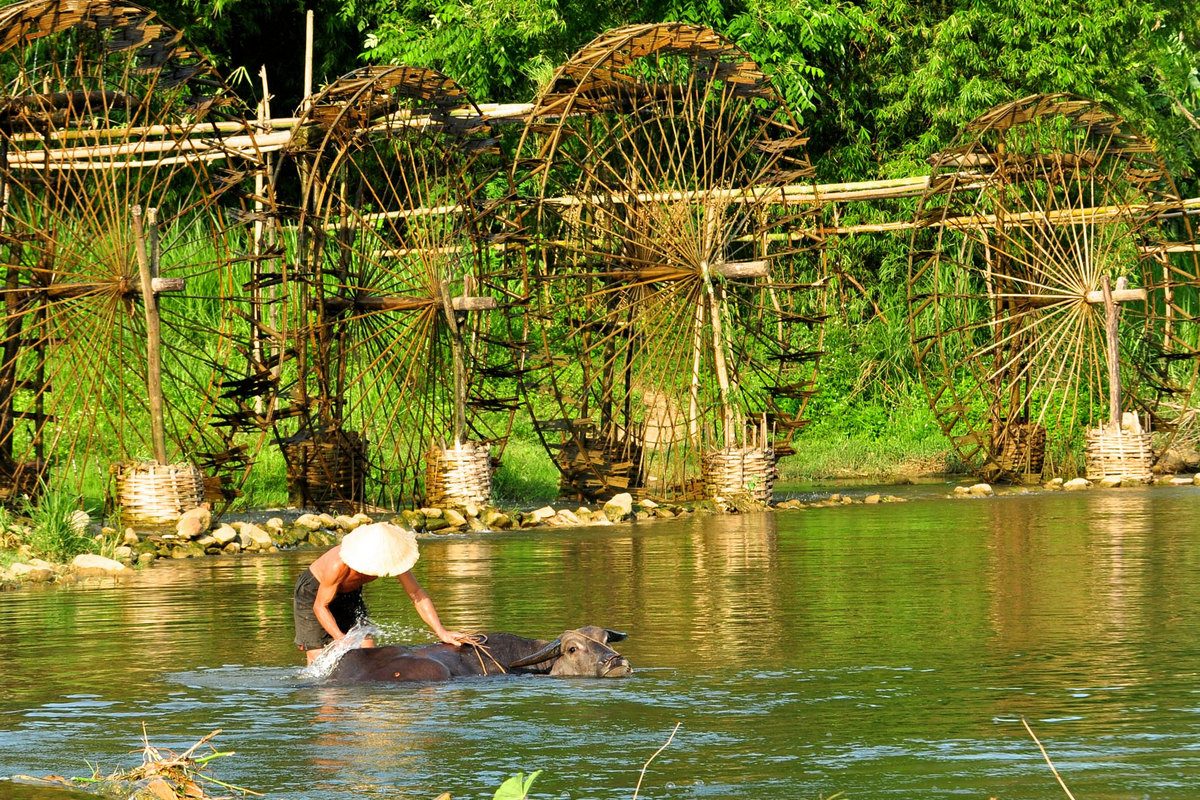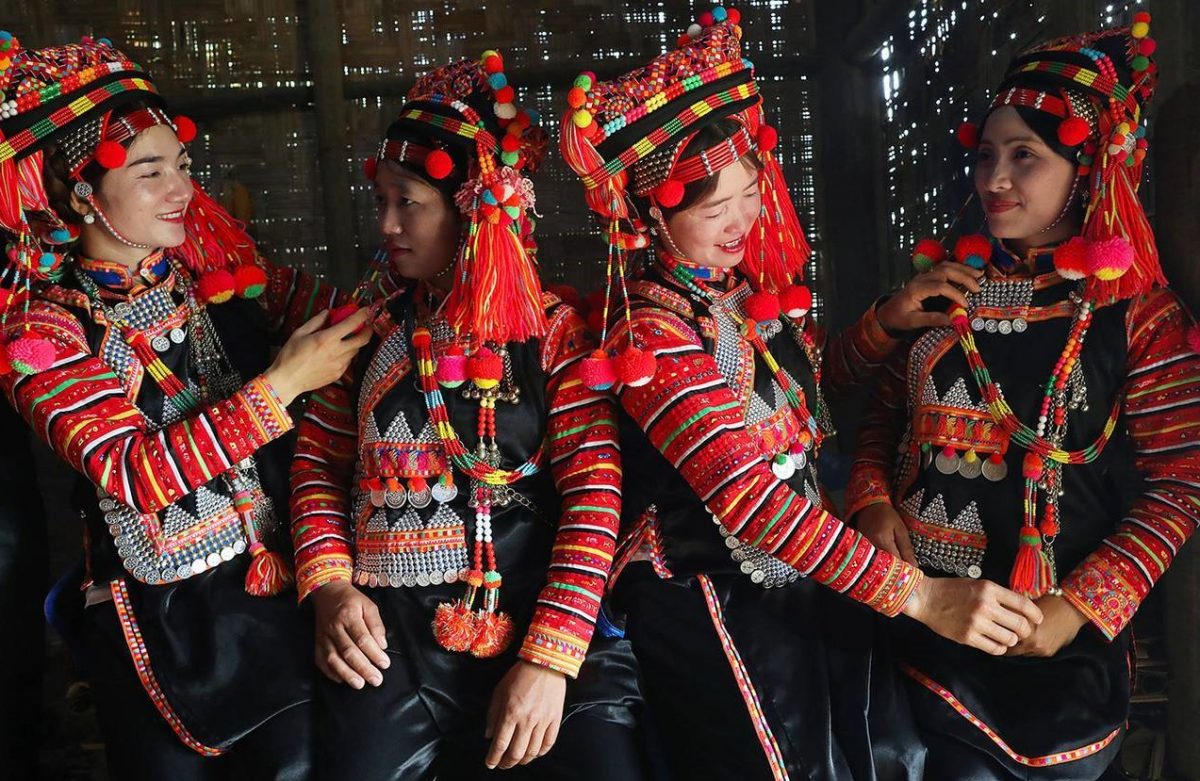Northeast Vietnam
15/05/2024Northeast Vietnam in the North of the Red River Delta includes 9 provinces. Those provinces are Tuyen Quang, Thai Nguyen, Bac Giang, Lang Son, Bac Kan, Ha Giang, Cao Bang, Phu Tho, Quang Ninh where are filled up with lime-stone mountains, masssifs, waterfalls, terraced fields & streams. The Northeast mountain area is also home of dozens of ethnic groups who still make living by traditional means like cultivating at terraced rice/corn fields, keeping cattle and poultry and fishing. Those ethnic minority tribes include Tay, Nung, Zao, H’Mong and the San Chi. In many areas in the remote areas of Ha Giang Province, there are numerous of hill tribes with population from several thousand people to only a few hundred members.
In addition, the name “Northeast” was released to distinguish from the Northwest and tours in the Northeast are particularly applied to adventure tours to remote and isolated areas where are difficult to visit. That’s why those areas are totally intact and unaffected by tourism. An adventurous tour through the Northeast of Vietnam provides travelers with distinctive opportunities to discover hidden corners and untouched areas. Mixing driving through spectacular sceneries with visiting to ethnic markets, hill tribe villages and historic sites, you will enjoy and experience the region’s unique culture.
If you are looking for a memorable trip to an area rich in culture, agriculture and historic values, then the Northeast is the right place to go as you will not only witness the diversity in customs, lifestyles, and cultures but also enjoy the amazing landscapes. So let’s keep following our below Northeast Travel Guide to best plan your adventure.
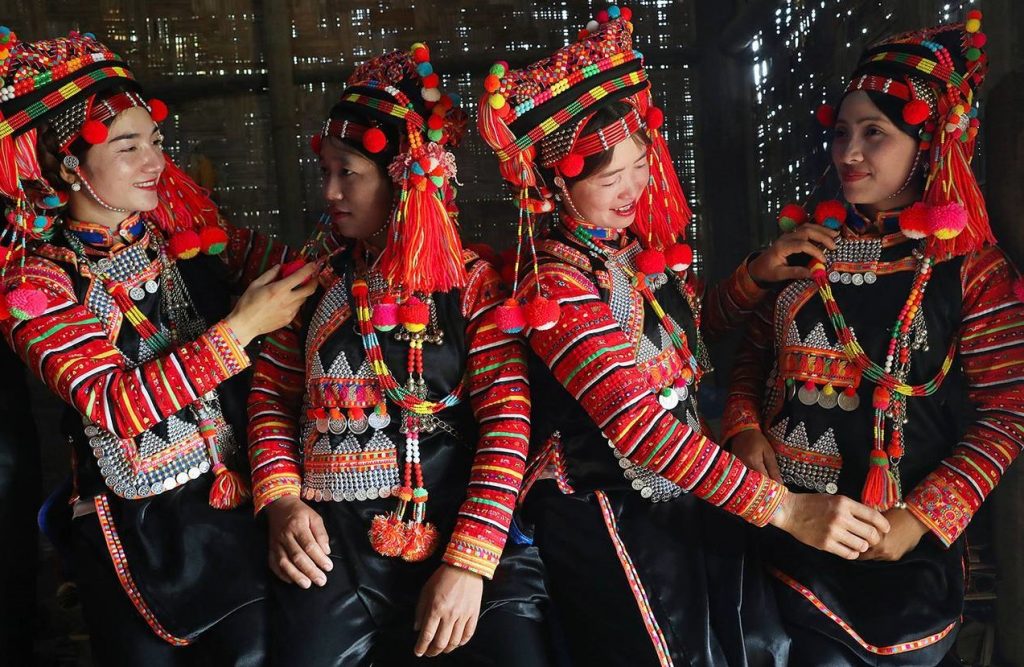
Attractions in Northeast Vietnam
*** 1. Tam Thanh Pagoda: This is a stone cave, located in Tam Thanh Ward, Lang Son City, on a mountain in the shape of elephants prostrating on the green grass. Tam Thanh Pagoda complex includes 3 caves that lie halfway up the mountain and can be reached by climbing up 30 stone steps. Passing hundreds of years as well as the vicissitudes of the history, Tam Thanh Pagoda is more and more popular to tourists thanks to its inherent natural beauty as well as cultural values with many ancient statues and stone steles.
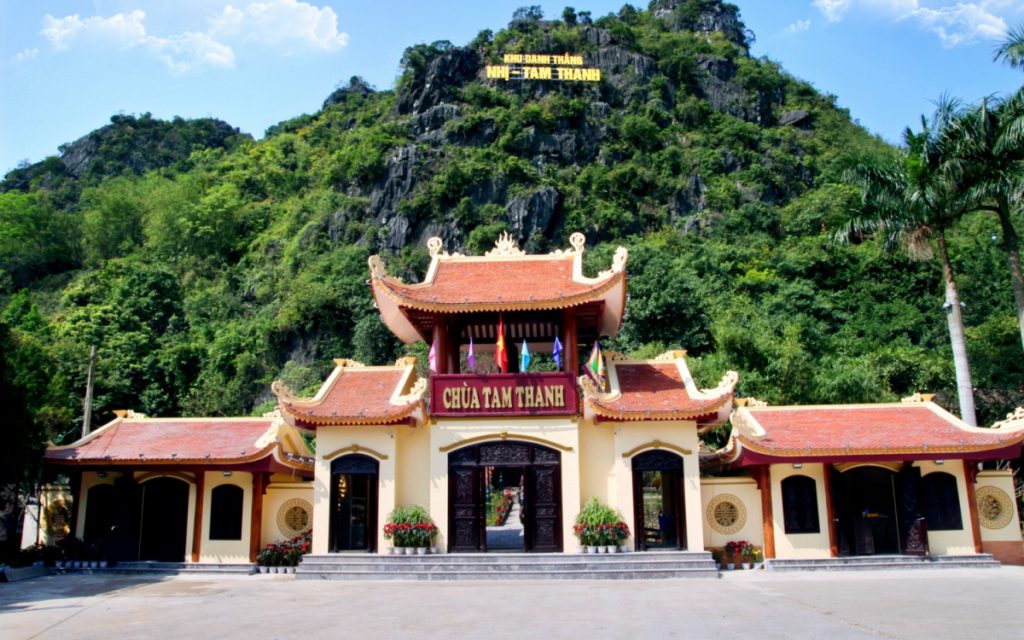
*** 2. Bac Son Valley: Located in Bac Son town, Lang Son province, Bac Son Valley is praised as one of the most marvelous valleys in Vietnam like a green paradise on earth. It takes only around 160Km from Hanoi city and that’s why tourists always choose it as a nice escape from the bustle and hustle atmosphere. There are incredibly high mountains from 500 to 1200 meters and you can even climb 500 steps up to one of those mountains named Na Lay peak to enjoy the great panoramic view of the valley with endless rice fields. Best time to visit Bac Son Valley is during July and during November as those month will be the harvest season meaning that you can see the rice fields in their best beauty with yellow. Besides enjoying beautiful scenery, it is so easy to discover the daily life of Tay Ethnic group as they densely populate here.
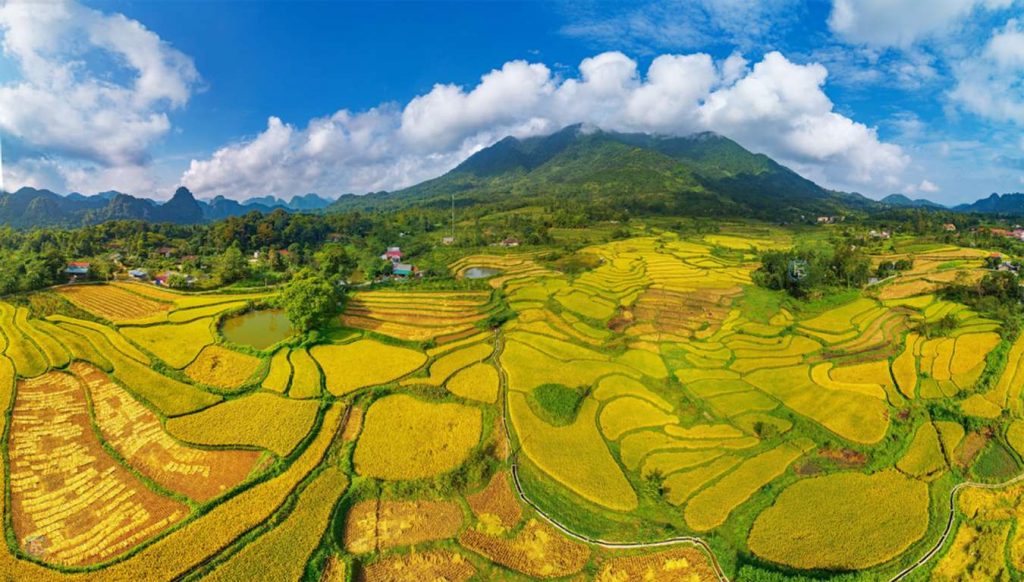
***3 Ba Bể Lake is a featured geographical science and is a biodiversity reservoir. It is a part of the Ba Bể National Park. The lake is at about 145 meter high to the sea level. Ba Be National Park was established as a national park in 1992. The park is a rainforest area with more than 550 named plant species. The hundreds of wildlife species here include 65 mammals, 353 butterflies, 106 species of fish, four kinds of turtle, and the highly endangered Vietnamese salamander. The 233 bird species include the spectacular crested serpent eagle and the oriental honey buzzard. Hunting is forbidden, but villagers are permitted to fish, and the government subsidises the villagers not to cut down the trees.
Ba Be Lake is home of 13 tribal villages, most belonging to the Tay minority plus smaller numbers of Dzao and Hmong. Nowadays, Ba Be Lake is getting more attention of domestic and international visitor for its variety of flora and fauna.
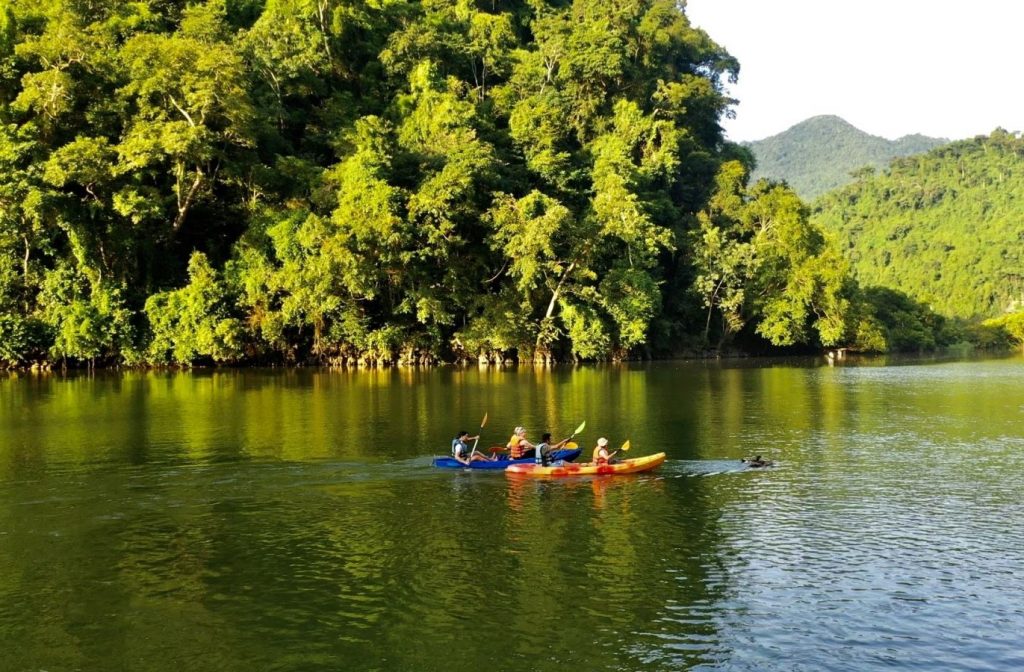
*** 4. Pac Bo Cave: Pac Bo Cave is a historical site, around some 60km from the Cao Bang city and very close to the Vietnamese-Chinese border. Pac Bo Cave is where Vietnam first President – Ho Chi Minh lived from Feb 1941 after 30 years of living abroad to find the way to liberate the country. In that Cave, he made many important meetings of discussing the ways to bring freedom to Vietnamese.
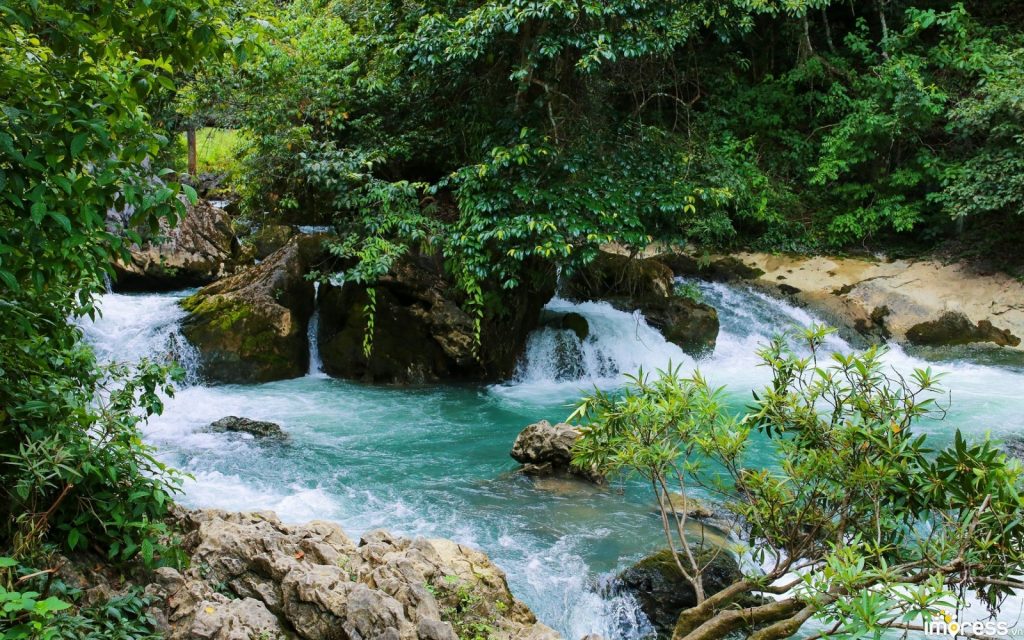
*** 5. Dong Van Plateau: Located in Dong Van Province, the Northern-most province of Vietnam sharing border with China, Dong Van Plateau draws more and more tourists to come and discover its primary beauty thanks to its spectacular and grandeur mountain scenery. This Karst plateau is one of the most unique Karst in Vietnam with black and magnificent boulders. They are formed in different sizes and shapes by environmental conditions and different stages of development. That distinctive plateau is home of many ethnic minorities like Mong, Dao, Lo Lo who create their own unique cultural and spiritual values. If you are lucky to be in Dong Van in Sunday morning, you can join their fantastic fair of H’Mong, Dao, Lo Lo who come from neighbor areas with colorful costumes. With all the above values, Dong Van Karst Plateau was the first geological park of Vietnam and Geoparks of the world to be recognized by UNSESCO.
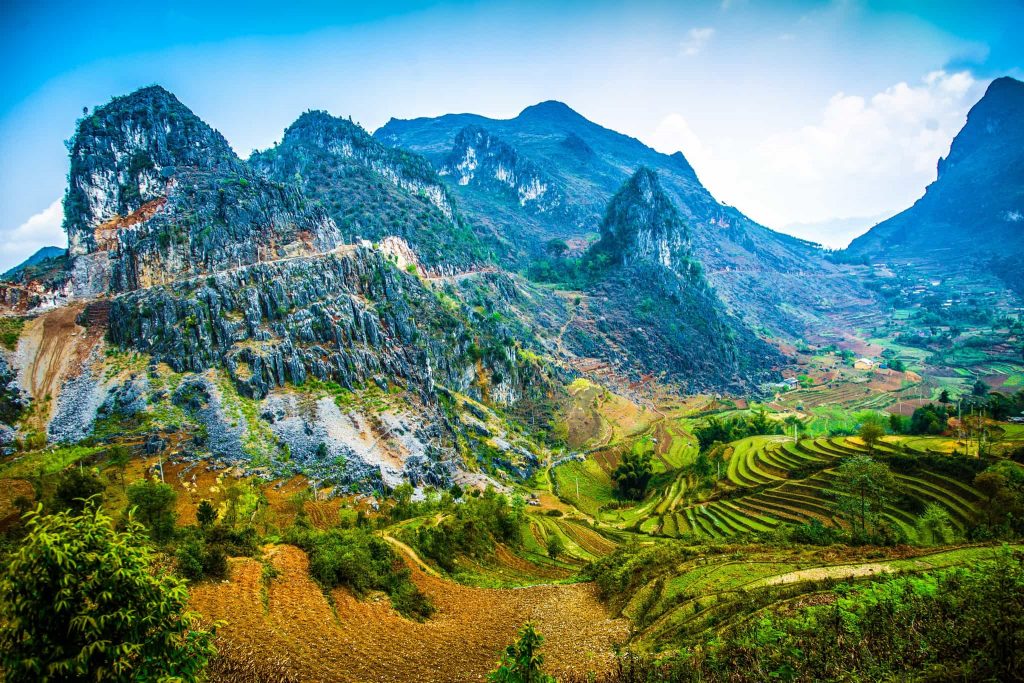
*** 6. Vuong Palace: Within Dong Van Karst Plateau, Vuong Palace, a century-old mansion, former home of a glorious royal family is truly a should-not-missed site. It was once the capital-house of Mong Ethnic people under feudal regime. It is where Vuong Family lived for many years as they ruled those areas for a long time. The first impression when you see that palace is its perfect combination with the nature and the rocky plateau. The Palace was built from stone, pine and terracotta tiles resembling China architecture during the Qing dynasty because of its curving tiled roofs. There are 64 rooms inside the Vuong palace that were all decorated with dragon, phoenix and bat motif – the symbol of royalty and prosperity.
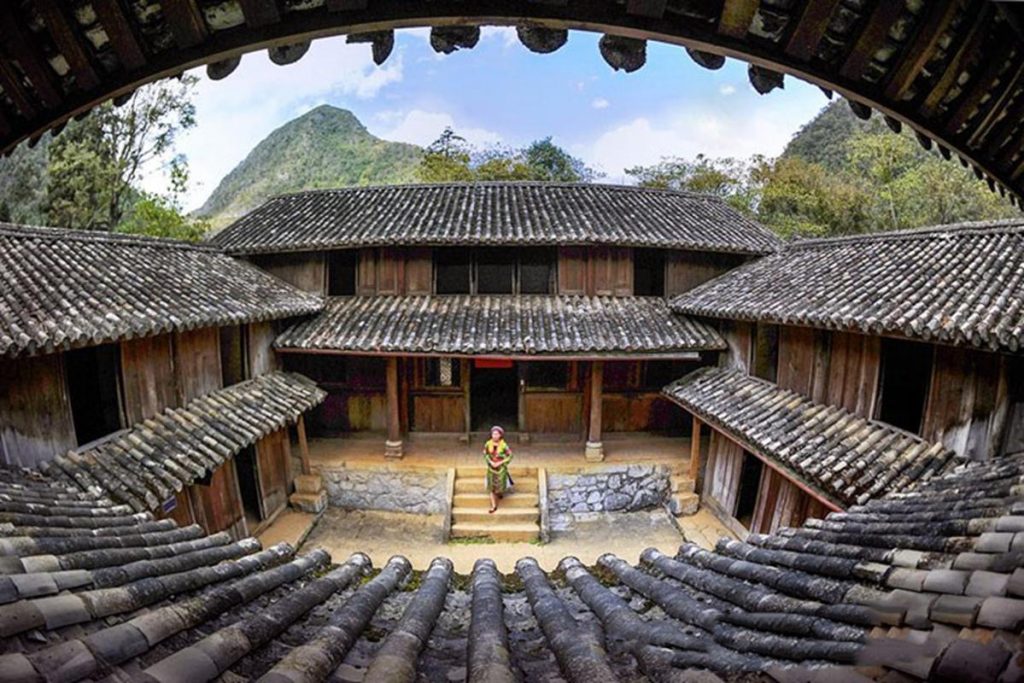
*** 7. Lung Cu Flag Tower: About 24 Km from the center of Dong Van District, Lung Cu Flagpole is a meaningful sites for tourists as its mark the border division between China and Vietnam in the Northernmost province. Lung Cu Flag Tower is built in the peak of Dragon Mountain at altitude of 1,700m. It is located about 160km to the North – east of in Ha Giang City. Lung Cu Flag Tower is the landmark with important historical significance, marking Vietnam’s territorial sovereignty.
To get Lung Cu Flag Tower, you will step up 389 steps up to the high mountains. To get the peak, Here you can admire the spectacular natural scenery of Dong Van Karst Plateau, terraced rice fields, ethnic villages. At the foot of the flag tower, there is a commemorative house, where displays work tools, costumes and cultural products of the ethnic groups in Ha Giang Province. Under the mountains, you can the ethnic villages where you can discover their daily life and culture. High mountains with Happy Road will become smaller and within your eye view.
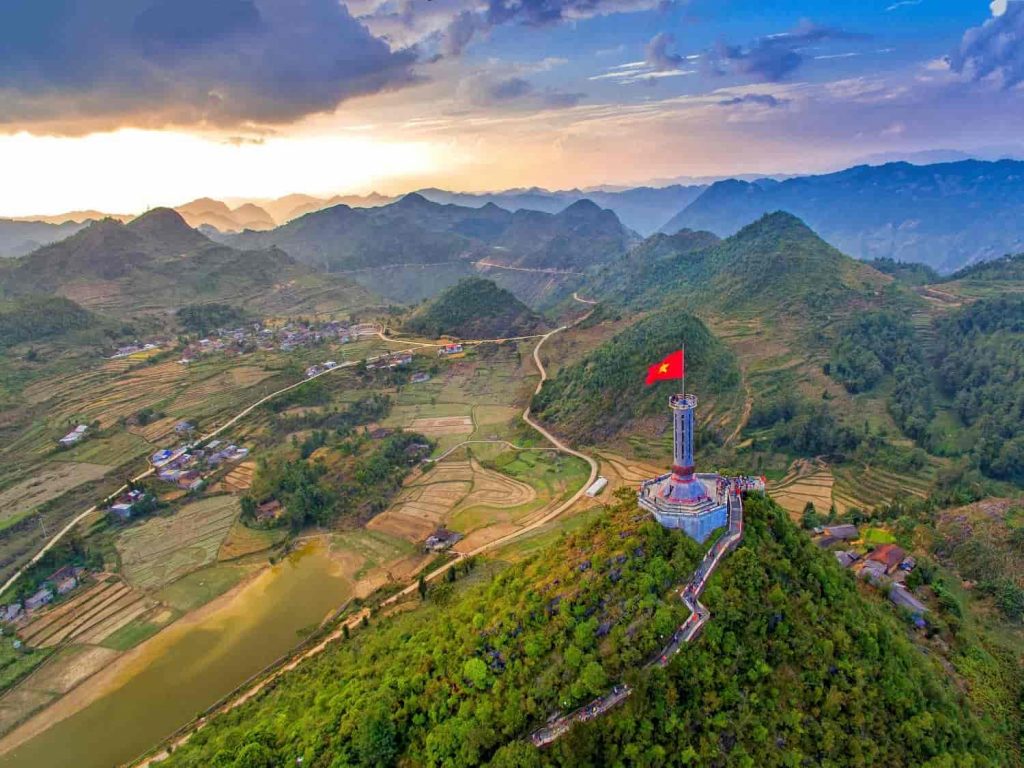
*** 8. Ma Pi Leng Pass: Ma Pi Leng is well-known as one of the most dangerous passes in Vietnam with 20 Km length and 2000 meter hight, connecting Dong Van and Meo Vac. It is a high mountain Pass at an elevation of 1.500m above the sea level. Ma Pi Leng is one of the top 4 most dangerous passes of Vietnam. This pass is located at Happiness Road which was built from the 60s of 20th century by H’mong people. It is praised as Vietnam’s Great Wall where you can see rolling gray mountains, Nho Que River below and snaking roads cling on the the mountain slopes.
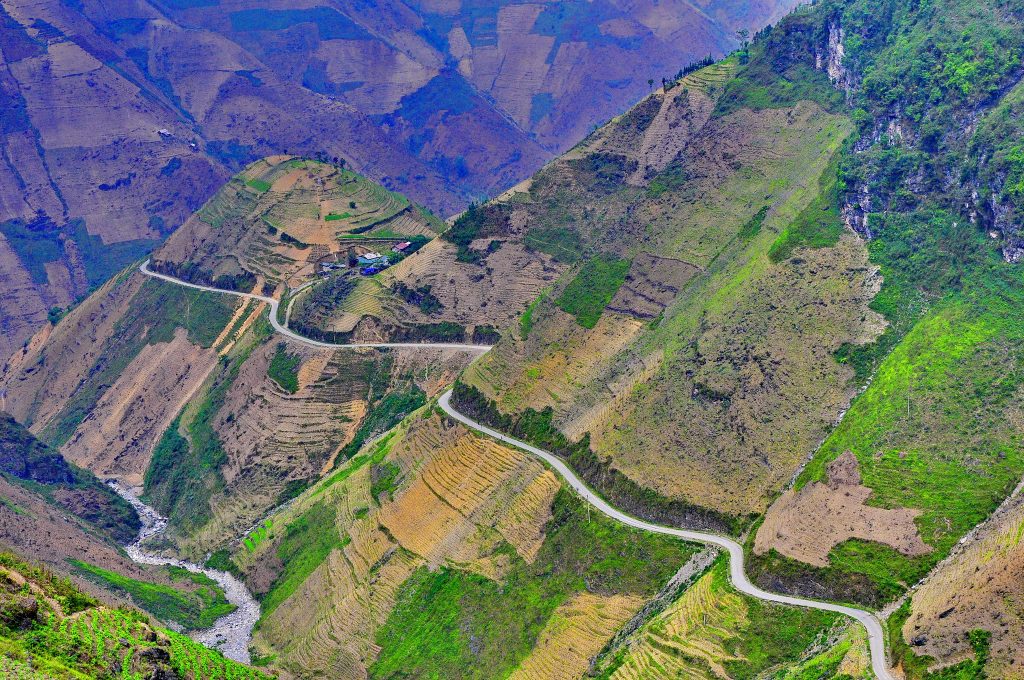
*** 9. Quan Ba Twin Mountain: Twin Mountains were formed from the geological movement processes of the earth’s crust, the fault of the limestone were about 400 million years ago. Looking really like two cherries dotted in the middle of rice fields, Twin Mountain symbolizes for crystalline beauty of nature and tectonic. It is really a great stopover on your trip to the Northeast of Vietnam.
*** 10. Ban Gioc Waterfall: Ban Gioc Waterfalls comprises two distinct falls. The main waterfall in the north is about 100 meters wide and 70 meters tall, featuring 3 cascades. One side of the fall is in China and other is in Vietnam. The water volume varies considerably between the dry and rainy seasons.When viewed from a distance, it resembles delicate ribbons of white silk gracefully draping the hill’s contours. This part constitutes the most expansive and picturesque panorama of Thac Ban Gioc Waterfall Vietnam
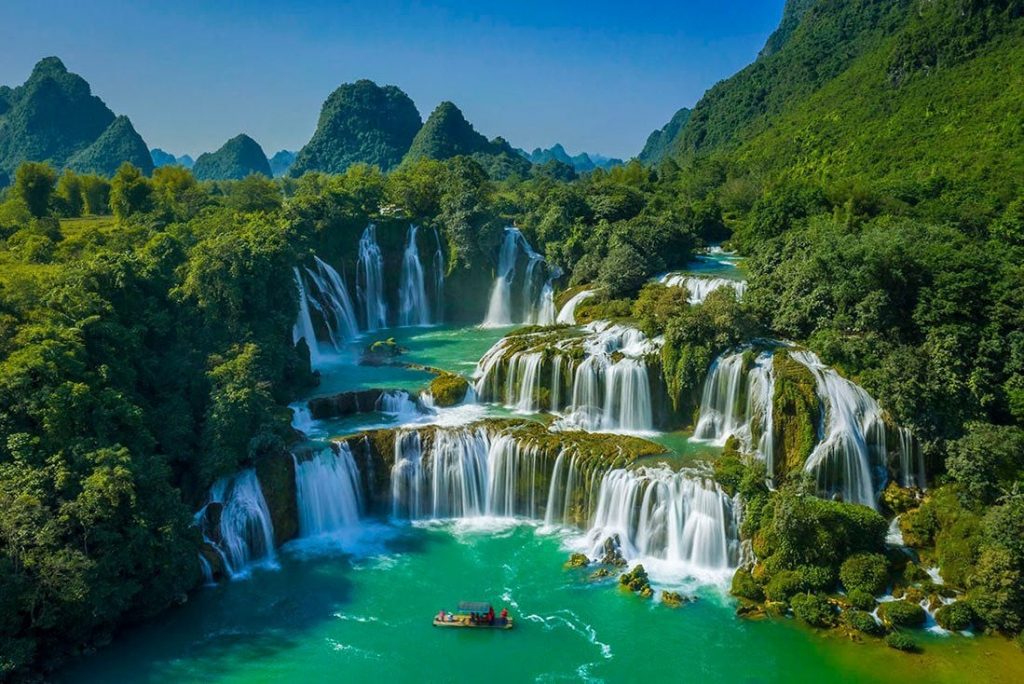
*** 11. Nguom Ngao Cave: Just 3 Km from Ban Gioc Waterfall. Nguom Ngao means “tiger’s cave” in the language of the local Tay ethnic minority. Nguom Ngao Cave is really an amazing cave that is primitive and totally intact and untouched by tourism effects. The cave was discovered in 1921 by local people and open to public since 1996 with the length of 2144 meters.
Nguom Ngao is a really amazing cave, huge and attractive with various shaped stalactites. Visiting the cave, you will be captivated by its wild beauty. Entry into the cave, you can feel the fresh, cool air from the natural mist inside. Nature has endowed the cave with stone formations that look like human beings, trees, plants and mythical animals.
